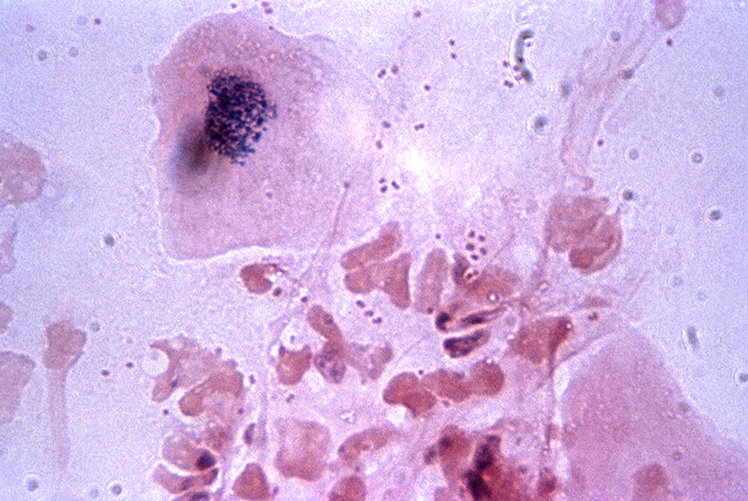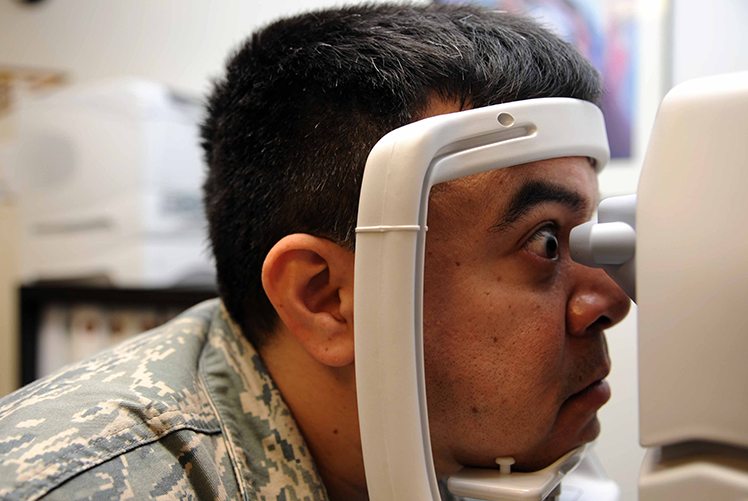If you're having trouble finding what you're looking for, consider using fewer words in
your search criteria. Results are limited to content that matches all terms in the search field.
Article
5/1/2019
Musculoskeletal disorders and mental health disorders accounted for more than half (52.6%) of all illness- and injury-related ambulatory encounters among active component service members in 2018. Since 2014, the number of ambulatory visits for mental health disorders has decreased, while the numbers of ambulatory visits for musculoskeletal system/connective tissue disorders, nervous system and sense organ disorders, and respiratory system disorders have increased.
Article
5/1/2019
Among service members deployed during 2018, injury/poisoning, musculoskeletal diseases, and signs/symptoms accounted for more than half of the total health care burden while deployed. Compared to the distribution of major burden of disease categories documented in garrison, a relatively greater proportion of in-theater medical encounters due to respiratory infections, skin diseases, infectious/parasitic diseases, and digestive diseases was documented.
Article
5/1/2019
As in prior years, mental health disorders, pregnancy-related conditions, and injury/poisoning accounted for the majority (59.8%) of all hospitalizations among active component service members in 2018. However, the hospitalization rate for all causes was the lowest rate in the past 10 years.
Article
5/1/2019
In 2018, mental health disorders accounted for the largest proportions of the morbidity and healthcare burdens that affected the pediatric and younger adult beneficiary age groups. Among adults aged 45–64 years, musculoskeletal diseases accounted for the most morbidity and healthcare burdens, and among adults aged 65 years or older, cardiovascular diseases accounted for the most.
Article
5/1/2019
In 2018, mental health disorders accounted for the largest proportions of the morbidity and healthcare burdens that affected the pediatric and younger adult beneficiary age groups. Among adults aged 45–64 years, musculoskeletal diseases accounted for the most morbidity and health care burdens, and among adults aged 65 years or older, cardiovascular diseases accounted for the most.
Article
4/1/2019

Risk factors for heat illnesses (HIs) among new soldiers include exercise intensity, environmental conditions at the time of exercise, a high body mass index, and conducting initial entry training during hot and humid weather when recruits are not yet acclimated to physical exertion in heat. This study used data from the Defense Health Agency’s–Weather-Related Injury Repository to calculate rates and to describe the incidence, timing, and geographic distribution of HIs among soldiers during U.S. Army basic combat training (BCT). From 2014 through 2018, HI events occurred in 1,210 trainees during BCT, resulting in an overall rate of 3.6 per 10,000 BCT person-weeks (p-wks) (95% CI: 3.4–3.8). HI rates (cases per 10,000 BCT p-wks) varied among the 4 Army BCT sites: Fort Benning, GA (6.8); Fort Jackson, SC (4.4); Fort Sill, OK (1.8); and Fort Leonard Wood, MO (1.7). Although the highest rates ofHIs occurred at Fort Benning, recruits in all geographic areas were at risk. The highest rates of HI occurred during the peak training months of June through Sept., and over half of all HI cases affected soldiers during the first 3 weeks of BCT. Prevention of HI among BCT soldiers requires relevant training of both recruits and cadre as well as the implementation of effective preventive measures.
Article
4/1/2019

Among active component service members in 2018, there were 545 incident diagnoses of rhabdomyolysis likely due to exertional rhabdomyolysis, for an unadjusted incidence rate of 42.0 cases per 100,000 person-years. Subgroup-specific rates in 2018 were highest among males, those less than 20 years old, Asian/Pacific Islander service members, Marine Corps and Army members, and those in combat-specific or “other/unknown” occupations. During 2014–2018, crude rates of exertional rhabdomyolysis increased steadily from 2014 through 2016 after which rates declined slightly in 2017 before increasing again in 2018. Compared to service members in other race/ethnicity groups, the overall rate of exertional rhabdomyolysis was highest among non-Hispanic blacks in every year except 2018. Overall and annual rates were highest among Marine Corps members, intermediate among those in the Army, and lowest among those in the Air Force and Navy. Most cases of exertional rhabdomyolysis were diagnosed at installations that support basic combat/recruit training or major ground combat units of the Army or the Marine Corps. Medical care providers should consider exertional rhabdomyolysis in the differential diagnosis when service members (particularly recruits) present with muscular pain or swelling, limited range of motion, or the excretion of dark urine (possibly due to myoglobinuria) after strenuous physical activity, particularly in hot, humid weather.
Article
4/1/2019

From 2003 through 2018, there were 1,579 incident diagnoses of exertional hyponatremia among active component service members, for a crude overall incidence rate of 7.2 cases per 100,000 person-years (p-yrs). Compared to their respective counterparts, females, those less than 20 years old, and recruit trainees had higher overall incidence rates of exertional hyponatremia diagnoses. The overall incidence rate during the 16-year period was highest in the Marine Corps, intermediate in the Army and Air Force, and lowest in the Navy. Overall rates during the surveillance period were highest among Asian/Pacific Islander and non-Hispanic white service members and lowest among non-Hispanic black service members. Between 2003 and 2018, crude annual incidence rates of exertional hyponatremia peaked in 2010 (12.7 per 100,000 p-yrs) and then decreased to 5.3 cases per 100,000 p-yrs in 2013 before increasing in 2014 and 2015. The crude annual rate in 2018 (6.3 per 100,000 p-yrs) represented a decrease of 26.5% from 2015. Service members and their supervisors must be knowledgeable of the dangers of excessive water consumption and the prescribed limits for water intake during prolonged physical activity (e.g., field training exercises, personal fitness training, and recreational activities) in hot, humid weather.
Article
4/1/2019

In 2018, there were 578 incident diagnoses of heat stroke and 2,214 incident diagnoses of heat exhaustion among active component service members. The overall crude incidence rates of heat stroke and heat exhaustion diagnoses were 0.45 cases and 1.71 cases per 1,000 person-years, respectively. In 2018, subgroup-specific rates of incident heat stroke diagnoses were highest among males and service members less than 20 years old, Asian/Pacific Islanders, Marine Corps and Army members, recruit trainees, and those in combat-specific occupations. Subgroup-specific incidence rates of heat exhaustion diagnoses in 2018 were notably higher among service members less than 20 years old, Asian/Pacific Islanders, Army and Marine Corps members, recruit trainees, and service members in combat-specific occupations. During 2014–2018, a total of 325 heat illnesses were documented among service members in Iraq and Afghanistan; 8.6% (n=28) were diagnosed as heat stroke. Commanders, small unit leaders, training cadre, and supporting medical personnel must ensure that the military members whom they supervise and support are informed about the risks, preventive countermeasures, early signs and symptoms, and first-responder actions related to heat illnesses.
Article
4/1/2019
As the most frequently reported vector-borne disease among active component U.S. service members, with an incidence rate of 16 cases per 100,000 person-years in 2011, Lyme disease poses both a challenge to health care providers in the Military Health System and a threat to military readiness. Spread through the bite of an infected blacklegged tick, infection with the bacterial cause of Lyme disease can have lasting effects that may lead to medical discharge from the military. The U.S. Military Academy at West Point is situated in a highly endemic area in New York State. To identify probable areas where West Point cadets as well as active duty service members stationed at West Point and their families might contract Lyme disease, this study used Geographic Information System mapping methods and remote sensing data to replicate an established spatial model to identify the likely habitat of a key host animal—the white-tailed deer.
Article
3/1/2019
Infertility, defined as the inability to achieve a successful pregnancy after 1 year or more of unprotected sexual intercourse or therapeutic donor insemination, affects approximately 15% of all couples. Male infertility is diagnosed when, after testing both partners, reproductive problems have been found in the male. A male factor contributes in part or whole to about 50% of cases of infertility. However, determining the true prevalence of male infertility remains elusive, as most estimates are derived from couples seeking assistive reproductive technology in tertiary care or referral centers, population-based surveys, or high-risk occupational cohorts, all of which are likely to underestimate the prevalence of the condition in the general U.S. population.
Article
3/1/2019

This report summarizes incidence rates of the 5 most common sexually transmitted infections (STIs) among active component service members of the U.S. Armed Forces during 2010–2018. Infections with chlamydia were the most common, followed in decreasing order of frequency by infections with genital human papillomavirus (HPV), gonorrhea, genital herpes simplex virus (HSV), and syphilis. Compared to men, women had higher rates of all STIs except for syphilis. In general, compared to their respective counterparts, younger service members, non-Hispanic blacks, soldiers, and enlisted members had higher incidence rates of STIs. During the latter half of the surveillance period, the incidence of chlamydia and gonorrhea increased among both male and female service members. Rates of syphilis increased for male service members but remained relatively stable among female service members. In contrast, the incidence of genital HPV and HSV decreased among both male and female service members. Similarities to and differences from the findings of the last MSMR update on STIs are discussed.
Article
3/1/2019

During 2000–2017, a total of 170,878 active component service members underwent a first-occurring vasectomy, for a crude overall incidence rate of 8.6 cases per 1,000 person-years (p-yrs). Among the men who underwent incident vasectomy, 2.2% had another vasectomy performed during the surveillance period. Compared to their respective counterparts, the overall rates of vasectomy were highest among service men aged 30–39 years, non-Hispanic whites, married men, and those in pilot/air crew occupations. Male Air Force members had the highest overall incidence of vasectomy and men in the Marine Corps, the lowest. Crude annual vasectomy rates among service men increased slightly between 2000 and 2017. The largest increases in rates over the 18-year period occurred among service men aged 35–49 years and among men working as pilots/air crew. Among those who underwent vasectomy, 1.8% also had at least 1 vasectomy reversal during the surveillance period. The likelihood of vasectomy reversal decreased with advancing age. Non-Hispanic black and Hispanic service men were more likely than those of other race/ethnicity groups to undergo vasectomy reversals.
Article
3/1/2019
This analysis summarizes the prevalence of testosterone replacement therapy (TRT) during 2017 among active component service men by demographic and military characteristics. This analysis also determines the percentage of those receiving TRT in 2017 who had an indication for receiving TRT using the 2018 American Urological Association (AUA) clinical practice guidelines. In 2017, 5,093 of 1,076,633 active component service men filled a prescription for TRT, for a period prevalence of 4.7 per 1,000 male service members. After adjustment for covariates, the prevalence of TRT use remained highest among Army members, senior enlisted members, warrant officers, non-Hispanic whites, American Indians/Alaska Natives, those in combat arms occupations, healthcare workers, those who were married, and those with other/unknown marital status. Among active component male service members who received TRT in 2017, only 44.5% met the 2018 AUA clinical practice guidelines for receiving TRT.
Article
2/1/2019

Glaucoma is an eye disease that involves progressive optic nerve damage and vision loss, leading to blindness if undetected or untreated. This report describes an analysis using the Defense Medical Surveillance System to identify all active component service members with an incident diagnosis of glaucoma during the period between 2013 and 2017. The analysis identified 37,718 incident cases of glaucoma and an overall incidence rate of 5.9 cases per 1,000 person-years (p-yrs). The majority of cases (97.6%) were diagnosed at an early stage as borderline glaucoma; of these borderline cases, 2.2% progressed to open-angle glaucoma during the study period. No incident cases of absolute glaucoma, or total blindness, were identified. Rates of glaucoma were higher among non-Hispanic black (11.0 per 1,000 p-yrs), Asian/Pacific Islander (9.5), and Hispanic (6.9) service members, compared with non-Hispanic white (4.0) service members. Rates among female service members (6.6 per 1,000 p-yrs) were higher than those among male service members (5.8). Between 2013 and 2017, incidence rates of glaucoma diagnoses increased by 75.4% among all service members.
Page 107 of 111
showing items 1591 - 1605